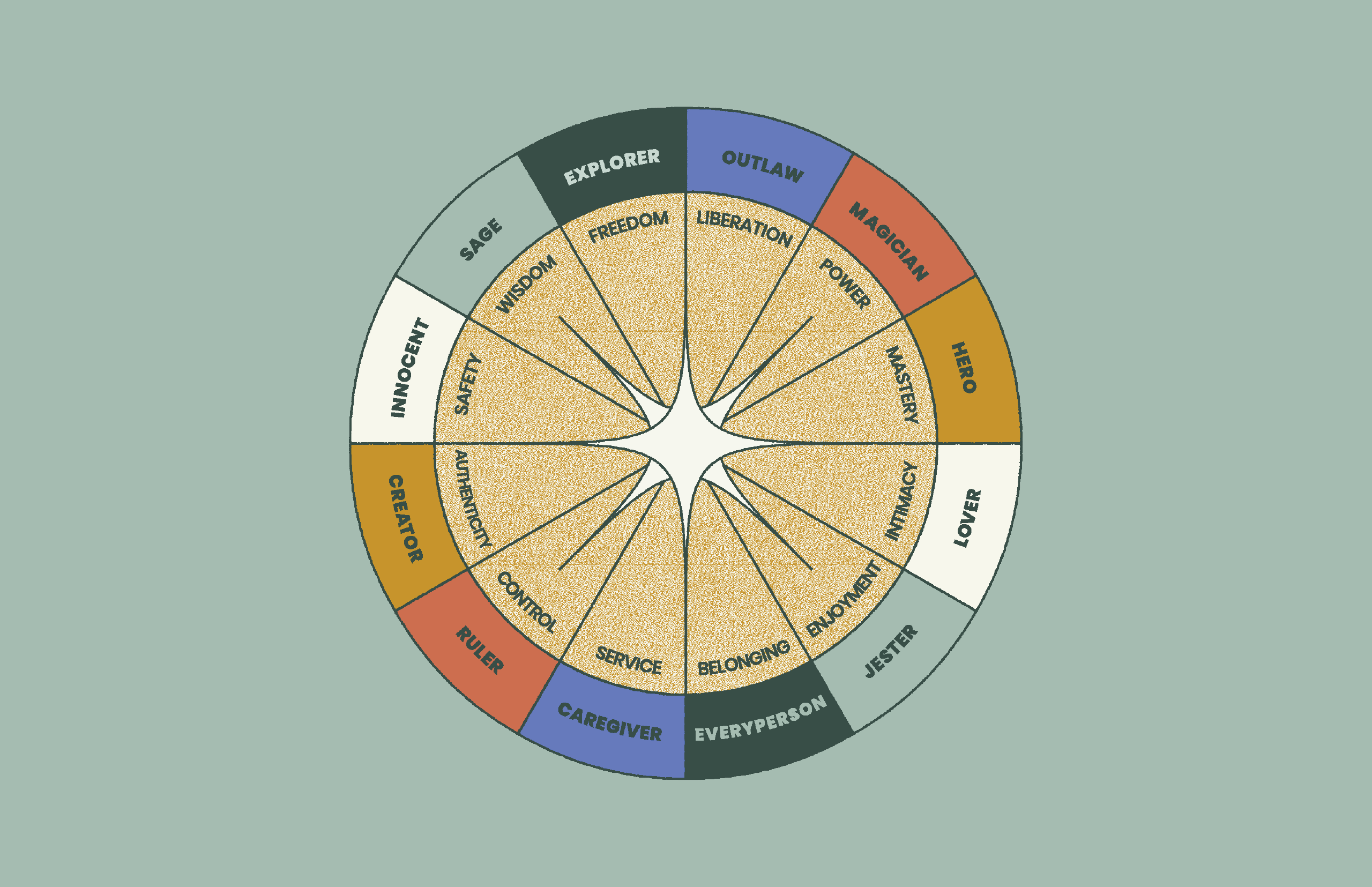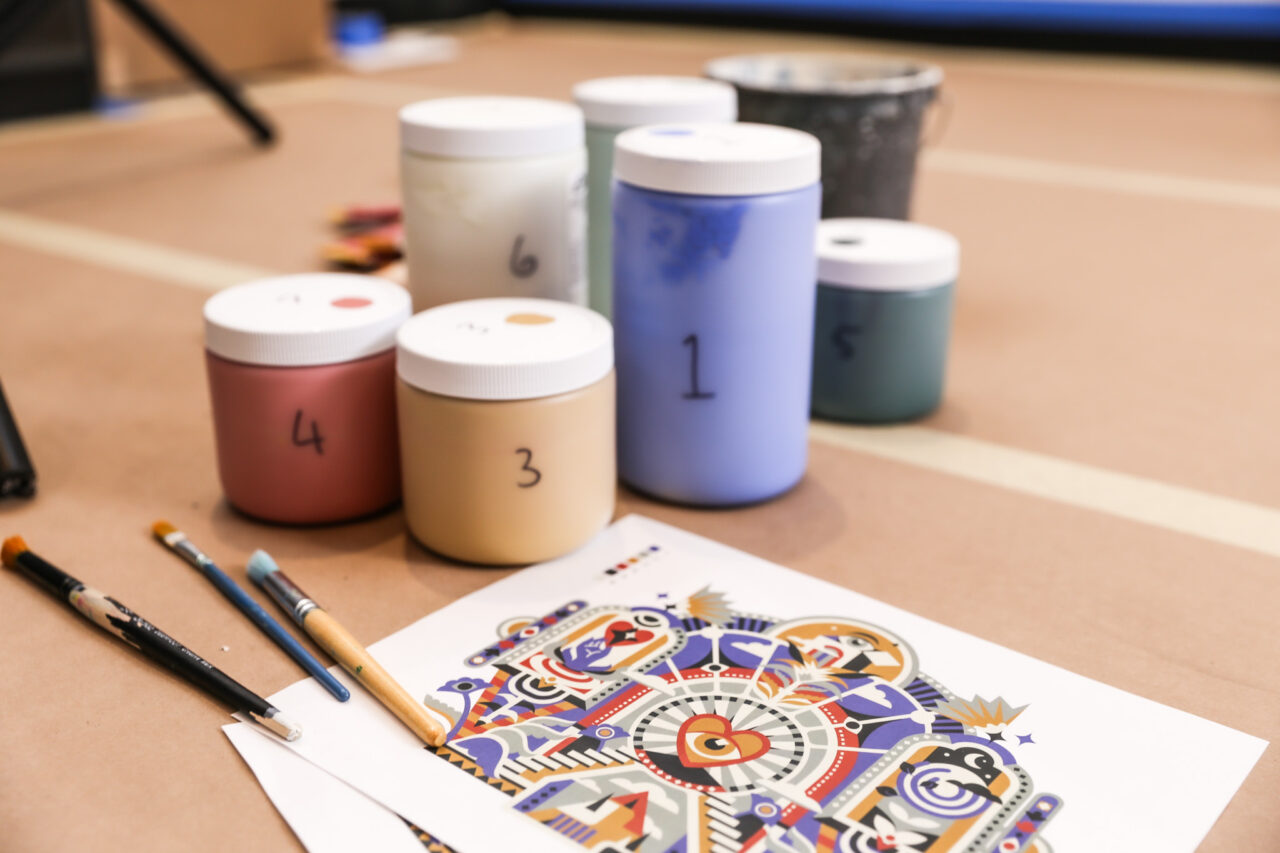If you just took our quiz, welcome (and if you haven’t yet, here’s the link). It’s a little silly, we know, and that was intentional. But underneath the quirky illustrations and Pacific Northwest references is something surprisingly powerful, a tool we use in nearly every branding project we take on.
We’ve seen archetypes used in ways that feel more like content fluff than actual strategy. So we thought it might be helpful to share how we use them in real projects with real brands.
Let’s start with the basics: What is an archetype?
Archetypes are recurring characters that show up in stories across cultures and generations like the hero, the caregiver, and the rebel. They’re patterns so deeply embedded in our collective psychology that most people recognize them without realizing they’re doing it. That’s what makes them so effective. The idea comes from the work of psychologist Carl Jung, who saw archetypes as part of our shared unconscious. They were later adapted into the branding world by Margaret Mark and Carol S. Pearson in their book The Hero and the Outlaw, which explored how brands could tap into these familiar patterns to create stronger emotional resonance. The concept is simple: people interpret brands the same way they interpret characters. We pick up cues, assign roles, and make snap judgments based on often momentary impressions.
Why does this matter for branding?
Most people are too busy to devote attention to your brand (don’t take it personally). They’re moving fast, filtering constantly, and deciding quickly. That means your brand has to communicate meaningfully without requiring anyone to read a word. Channeling archetypes helps a brand create the right impression in a split second. They act as a kind of compass. Once you know the role your brand is playing in people’s minds, you can start building design, language, and behavior around that role in a consistent and strategic way that people can feel more quickly than they can read. For example, if your brand is built around the Explorer archetype (an adventurous spirit seeking fulfillment), you might use wide-open photography, evocative copy, and a design system that feels untethered. If your brand leans into the Sage (a trustworthy presence that leads with wisdom), you might choose a more restrained palette, timeless typography, and calm, confident language.
How we actually use them at Murmur
At Murmur, we don’t just assign a single archetype and move on. For every project, we spend time understanding what the audience needs emotionally. It’s not just what they want from the product or service, but how they want to feel about the decision: safe, energized, seen, in control, part of something. From there, we build what we call a brand character. Usually that means blending two to three archetypes (with one primary) and mapping them to the values and behaviors of the brand. It gives us a framework to make creative decisions, and it helps the whole team get on the same page about tone, presence, and purpose. If a client says, “We want to feel rebellious, but not chaotic,” or “We want to come across as warm, but still confident,” we have language and visual references that help clarify what that actually looks like in execution. This is key for translating research and strategy to actual design and messaging.
But don’t archetypes get overused?
Yes, absolutely. Archetypes can be misused in ways that feel superficial or generic, especially when brands try to cram themselves into a mold without understanding the psychology underneath. That’s why we treat archetypes as one of many tools, not the only one. They work best when they’re connected to a real understanding of values, audiences, and market context. When done well, they create distinctly charismatic personalities, not the usual sameness.
Why this still works, especially now
In a landscape where people are reading less and deciding faster, archetypes offer a kind of visual and emotional shorthand. They let a brand say, “This is who we are,” without needing to explain it. And they give audiences something to grab onto — a feeling, a vibe, a kind of familiarity that makes the brand feel right for them. Not everything has to be instantly recognizable. But when it is, it’s more effective. And at the end of the day, that’s what drives impact.



